There’s a kitchen revolution happening.
You know how that buzzword, “quiet luxury,” that’s filled your feed lately?

Well, there’s something specific happening VERY quietly in the luxury market that you really, really should know about. I call this revolution “quiet” because it’s not shouting for your attention. In fact, it’s designed to do the opposite…to be discrete!!
Cue: embedded cooktops inside your counter surfaces, with NO VISIBLE burners. No black glass surface. In fact, there’s nothing to see at all. This is invisible cooking, and it’s here. Now. It’s available. I saw the products and got to play with them at C.Next in January this year. This technology opens the door to kitchen design possibilities you’ve never considered before.
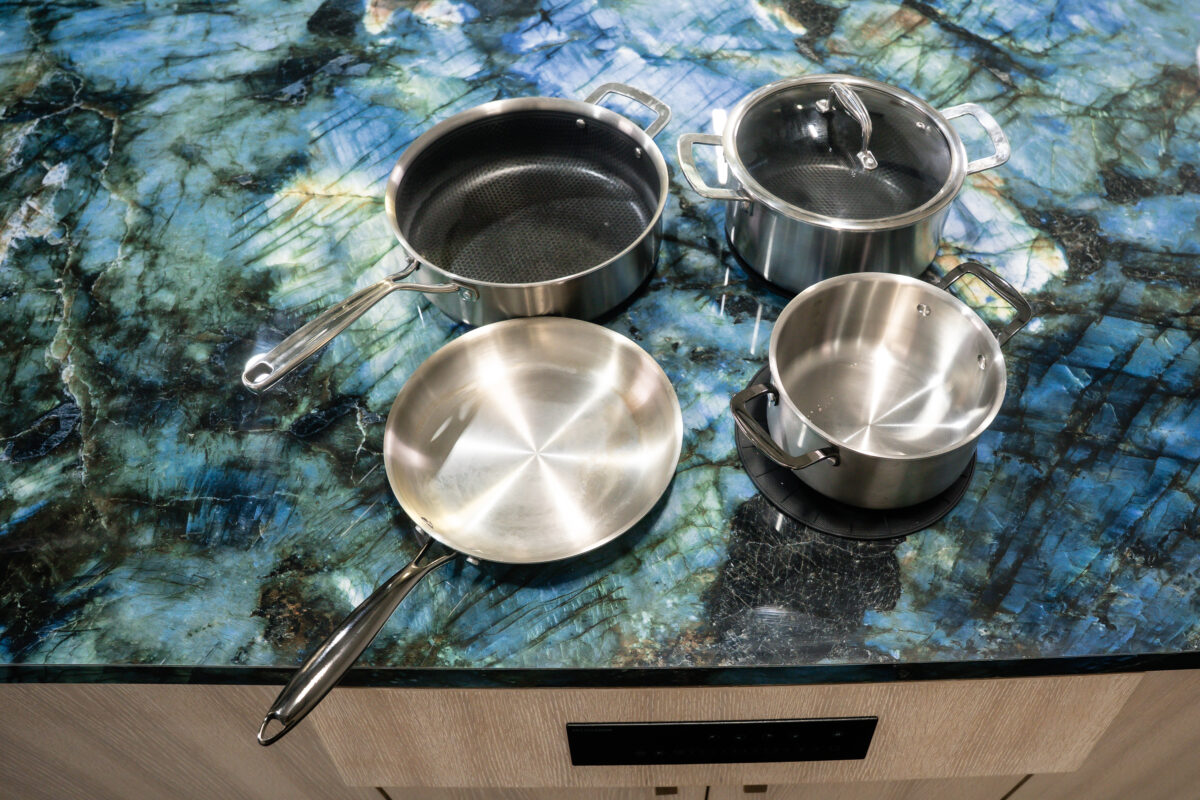
Now, it’s important to know what this is, how it works, and—best of all—what it means for your kitchen. That’s why I connected with the CEO of Invisacook…and I have notes to share below!!
What I saw at C.Next
C.Next is an invitation-only design professionals event that showcases the most forward-thinking home tech. It has exhibits from luxury brands, jaw-dropping products, and brilliant minds behind the most innovative products out there.
When I walked through C.Next this year, I saw all kinds of incredible stuff. Voice-controlled appliances…AI-enhanced lighting…integrations with occupancy sensors to automate even more of the experience in your home. My favorite, though, was this cook-through-the-countertop technology. I’d known about Invisacook and had seen their products before, but since then I’ve noticed that homeowners still don’t know what this technology really means for their homes.
In terms of how a kitchen is laid out, and what space is needed for what, this is the most colossal shift in kitchen design since the adoption of large-scale kitchen islands with plumbing and electric.
Here’s why…
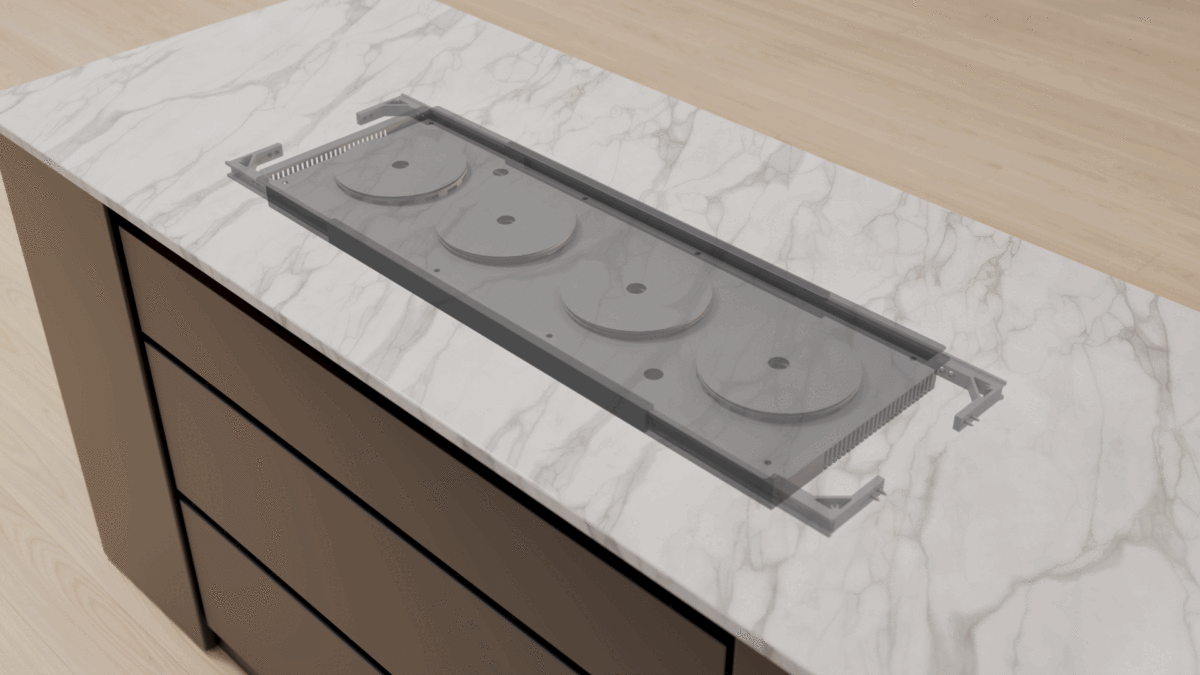
Invisacook 101: What It Is and How It Works
Invisacook is a cooktop system that’s installed beneath your countertop surface. The countertop stays clean, smooth, and as expansive as you want it…and beneath the surface, you have induction cooking elements that heat pans ONLY when the right kind of metal touches the surface.
Take a moment to process. That means:
- Your counter surface stays cool to the touch
- Your entire counter surface remains completely flat (hello, easy cleaning)
- The technology works THROUGH your selected slab (more on that below)
And yes, the technology works beautifully. It’s fast. It’s SAFE. No open flames, no red-hot surfaces, no “oops, I left the burner on.” And whenever you’re not cooking on it, you have extra-expansive counter space. You can do all the serving and prepping and homework etc. that you want, anywhere across the counter!
My Two Cents: How (and Where) to visualize This in Home Design
Now start to think about how and where these surfaces can be used in your home.
I know I’m definitely thinking about it!!
Here are some of the possibilities…
- Kitchen islands with invisible cooking zones (the most typical application)
- Entertaining space with a built-in “wow” factor (like cooking fajitas or fondue right at the table)
- Design for accessibility (with cooking surface installed lower than traditional ranges, since they’re safer…meaning this tech can help design for all ages and abilities)
- Tiny homes (the original market for Invisacook maximized counter space in VERY small areas!!)
- Outdoor kitchens (save space in outdoor kitchen design, too, since it’s outdoor rated)
- In-law suites or secondary prep areas (you can have multiple cooking areas or upgrade the in-law suite with the BEST use of space using this technology…)
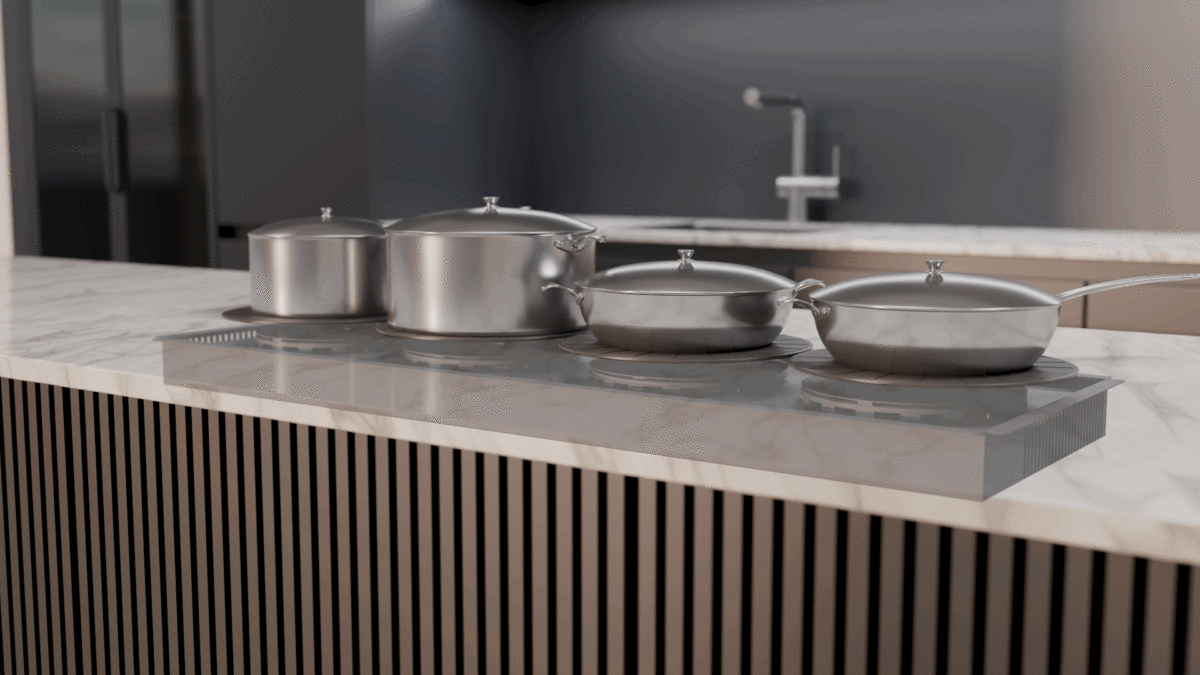
Meet the CEO: Hans King on Invisacook’s Past, Present, and Future
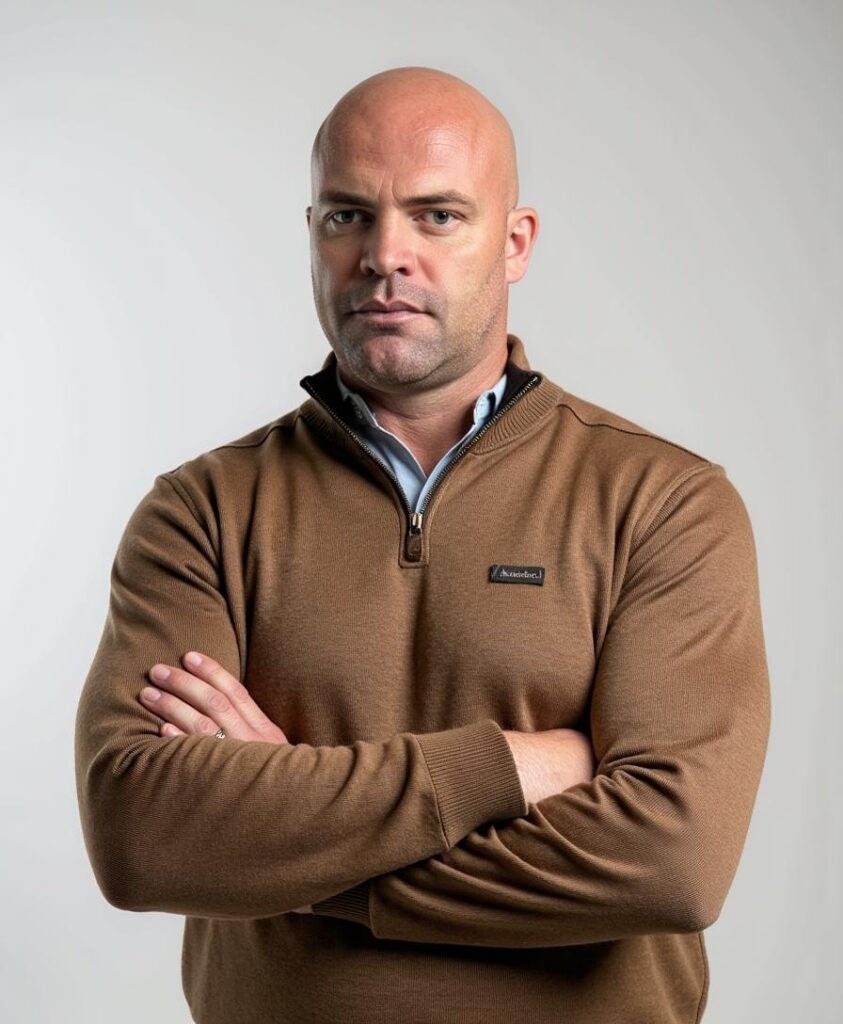
I reached out to Hans King, the CEO of Invisacook, to get an insider look at the origin of this technology and what he sees from inside the industry.
Here are the highlights from the interview!!
On the origin of Invisacook and its development…
Invisacook was designed behind the need for space in the kitchen, since many small kitchens have limited countertop space. This evolved into more and more places to have induction installed and giving you that extra space…We developed over a year of testing, a unit that was not seen to work through 12mm and now recently as of last year through 2cm material, while partnering with the big brand names of Cosentino Dekton, Neolith, Sapienstone, Infinity Surfaces, Daltile Panoramic…and that list goes on and on.
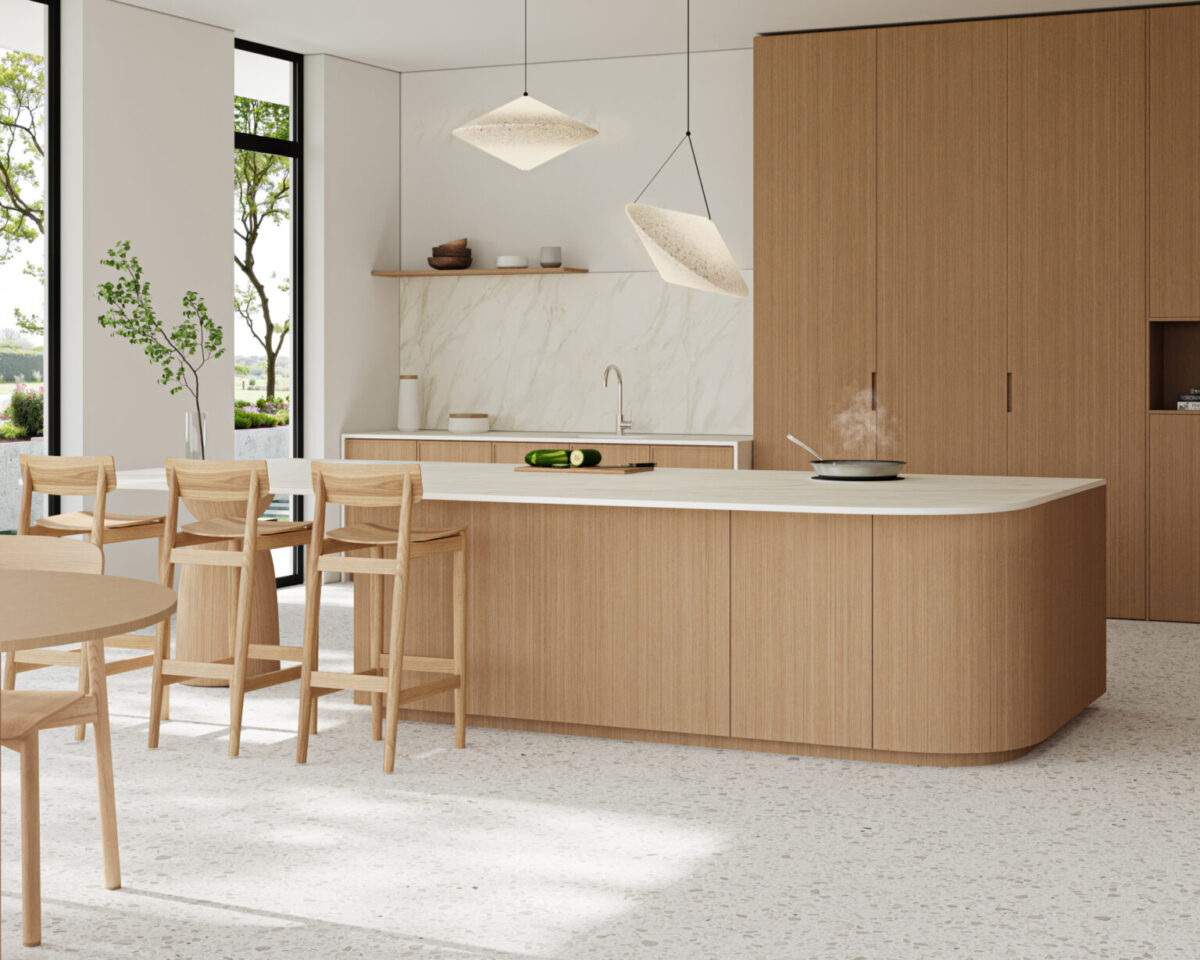
When you started doing this (2019), what materials were available that enabled you to develop these products?
My partner Curtis (an engineer) and I tested many stones to see what would work and what would not…over time and testing, we found Ultra Compact and Porcelain were the best materials due to their durability, and the fact that they are heat, scratch, and stain resistant. Granite will work, but cannot be guaranteed, though some homeowners love it and choose to take that chance.
What households or markets were early adopters of this tech?
Markets in California and New York were early to jump on board to this new tech, as they had to move away from gas due to new laws in place. RV and tiny home owners also saw the benefit. The entertainment and collective cooking possibilities suggest that vacation rentals and legacy homes are next.
Are there “cons” or drawbacks to the product?
The cooktop is 10% slower than a glass induction unit since the heat passes through the extra surface, but if you haven’t ever cooked with induction, you won’t even realize it—because induction is already so much faster than gas and electric. There is a learning curve of remembering where the burners are, but it’s like riding a bike. Once you’ve used it once or twice, it’s second nature.
What are some examples of where else these surfaces are used beyond the primary cooking space?
We’re getting more people to install these in outdoor kitchens next to the grill to eliminate the large side burner that takes up space. We also see extra cooking and warming areas on islands, or near the sink for the elderly who don’t have a pot filler. We’ve seen them put into in-law suites where there’s only a 110V power option (so they can’t do a full range cooktop due to code). My favorite is adding this to the dining room table to keep food warm or do hot pot, fajitas, fondue, etc.
So, Invisacook is graded for outdoor kitchen use?
Yes, we are approved for outdoor patios, as our units are powder coated already, and are under the non-porous material. So, there is no way for the weather elements to cause damage to the unit.
What does care and maintenance look like?
The maintenance is simple, as there are no cracks or crevasses to clean. You can wipe down the countertops with just soap and water. With porcelain being non-porous as well, it’s easy to clean up any food or oil spills. Cleaning your kitchen is now so much faster and easier than ever due to Invisacook.
How do you see these products changing the way we design kitchens?
I see this as a stepping stone to the future of the kitchen, which is making things more wireless (for starters). It’s the new standard as induction becomes the way to cook in the future.
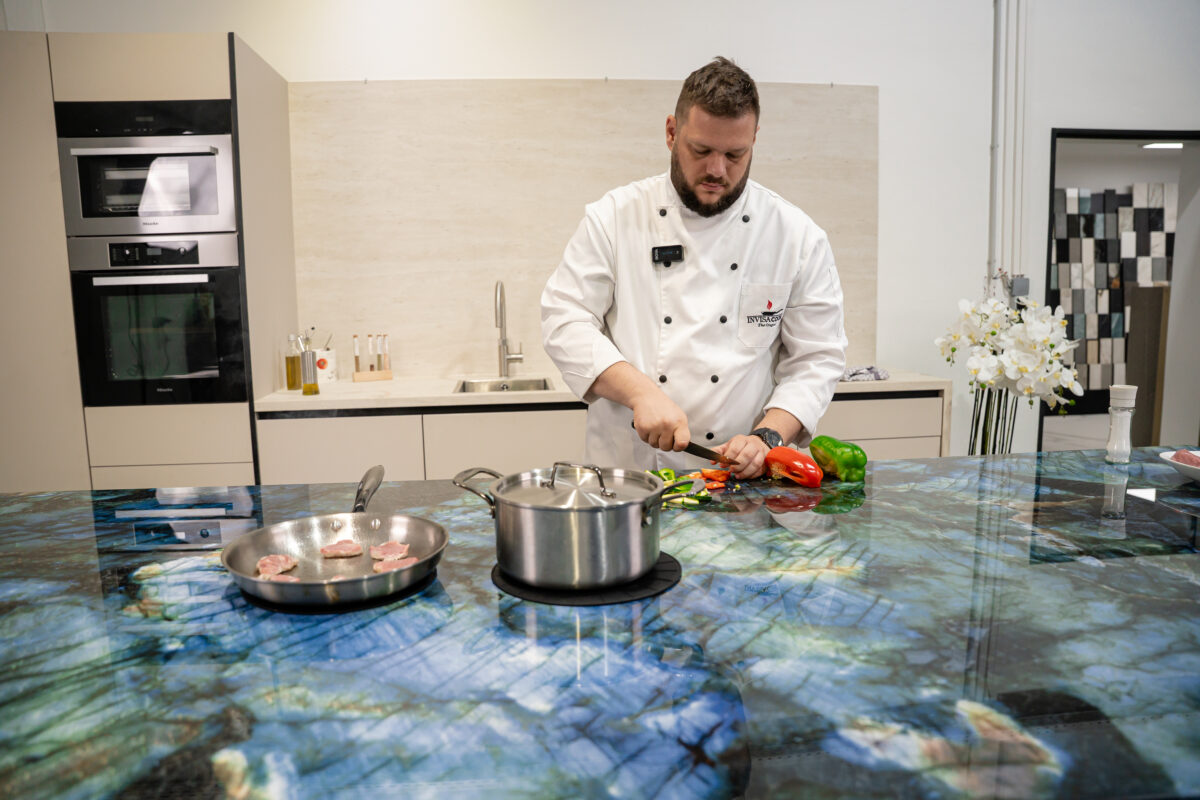
How are units installed, and is this easy to install or replace if needed?
Invisacook was a challenge to install early on, which is why we worked directly with the fabricators as dealers, so they could install the product. In 2025, we released a new version for installation, our Rail System, which has made it possible to be installed before the countertops even come into the job site. This has been a game changer, because the remodeler can install it, not just the dealers.
You know what comes next…if you want to visualize what an invisible induction cooktop could do for your kitchen, reach out to us to talk about your renovation dreams!!
